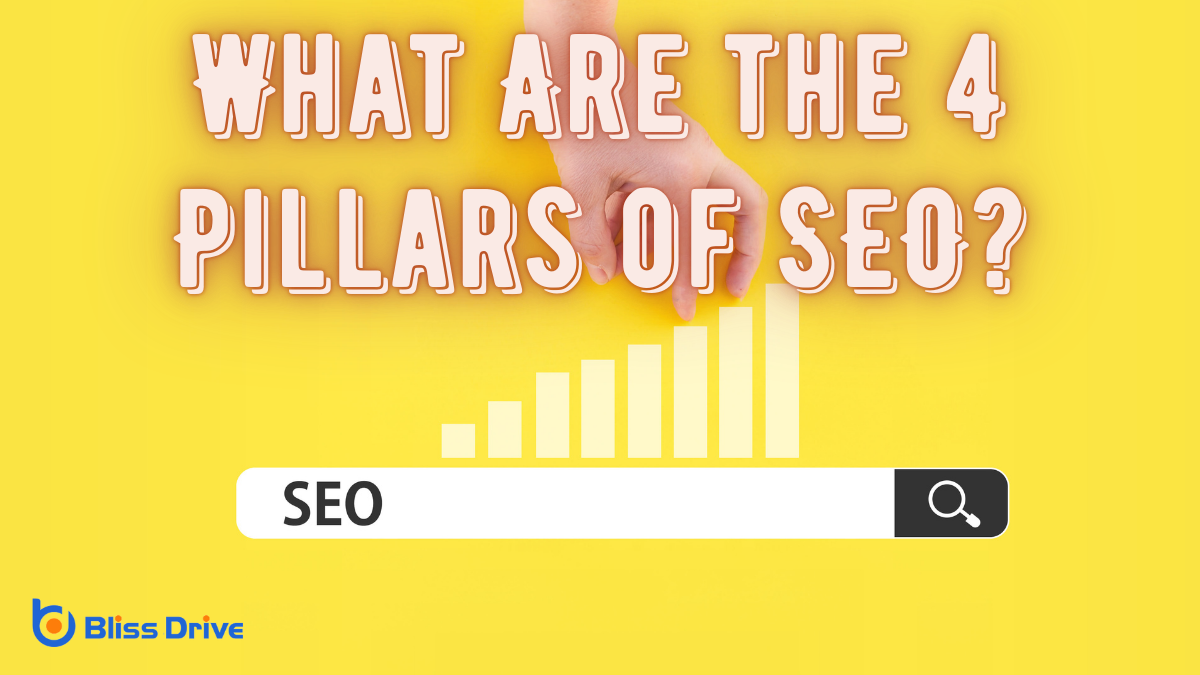Digital Marketing Services
Learn More About Us

When we talk about the four pillars of SEO, we're referring to the foundational aspects vital for boosting a website's visibility on search engines. These are understanding technical SEOOptimizing the server and website structure to improve search engine crawling and indexing., mastering on-page SEOOptimization techniques performed directly on the website, including content and HTML source code., exploring off-page SEOOptimization actions taken outside the website, primarily involving backlinks and social media., and crafting quality content. Each pillar plays a unique role in optimizing a website's performance, but how do they interact, and why are they so essential? Let's uncover what makes them the backbone of successful online strategies.
When we plunge into the world of SEO, understanding technical SEO is essential for building a strong foundation. It's the backbone that ensures search engines can efficiently crawl and index our website. We need to focus on aspects like site speed, mobile-friendliness, and secure connections (HTTPS). These elements directly impact how search engines perceive our site and affect user experience, which is crucial for rankingsThe position at which a website appears in the SERP..
We should also pay attention to XML sitemaps and robots.txtA file that tells search engine crawlers which pages or files they can or cannot request from your s... files, which guide search engines through our site's structure. A well-optimized site architecture ensures that our content is easily found and indexed. By mastering these technical elements, we lay the groundwork for our SEO efforts, making it easier to tackle other components of SEO down the line.
False beliefs about On-Page SEO can hold us back. It's not just about keywordsWords or phrases that users type into search engines to find information.; it's about creating content that resonates with users and search engines.
Let's focus on optimizing elements like title tags, meta descriptions, and headers. These components guide search engines to understand our page's context and relevance.
We should guarantee that our content is clear, engaging, and provides value. Structuring it with proper headings allows readers to navigate easily, improving user experience.
Don't forget image optimization either. Properly tagged and compressed images help with load times and accessibility.
Let's remember, On-Page SEO is about refining our website’s content and structure. By doing so, we enhance user engagementThe level of interaction and involvement users have with social media content. and improve our site's visibility in search engine results.

How do we elevate our SEO strategy beyond our own website? Off-page SEO is our answer. It’s about building our website's reputation and authority across the internet.
We start by focusing on backlinksLinks from other websites pointing to your website, crucial for SEO.—links from other reputable sites pointing to ours. Think of them as votes of confidence. The more we've from trusted sources, the stronger our site appears.
Engaging with online communities also boosts our off-page SEO. By contributing to forums or social media, we foster relationships and encourage others to share our content, expanding our reach.
Additionally, we can explore guest bloggingWriting and publishing articles on other websites to reach a new audience. opportunities. Writing valuable articles for other websites positions us as experts and drives traffic back to our site.
Together, these efforts enhance our visibility and credibility online.
Quality content is the cornerstone of effective SEO. When we craft content, our focus should be on delivering value to our audience. We want to guarantee that our content answers questions, addresses pain points, and provides actionable insights. Search engines like Google reward content that engages and helps readers.
To achieve this, we must prioritize originality and relevance. We should write in a clear, concise manner, avoiding jargon unless it's necessary for understanding.
It’s also important to use keywords naturally, integrating them in a way that maintains readability. Let’s not forget to incorporate visuals—images, videos, and infographicsVisual representations of information, data, or knowledge intended to present complex information qu... can enhance understanding and engagementThe interactions that users have with a brand’s content on social media..
In our journey through the four pillars of SEO, we've uncovered the importance of technical SEO, on-page optimizationImproving individual webpages to rank higher and earn more relevant traffic in search engines., off-page strategies, and crafting quality content. By mastering these areas, we can enhance our website's visibility and reach. Let's remember, SEO isn’t a one-time task but an ongoing process. Together, we can optimize effectively, adapt to changing trends, and watch our efforts translate into improved rankings and increased organic trafficVisitors who come to a website through unpaid search engine results.. Let's keep pushing forward!
